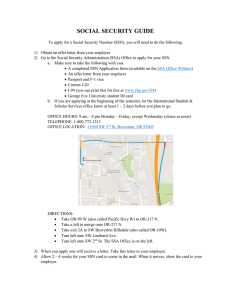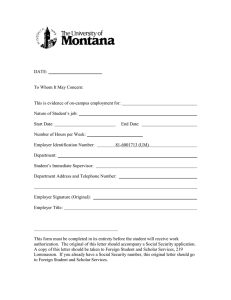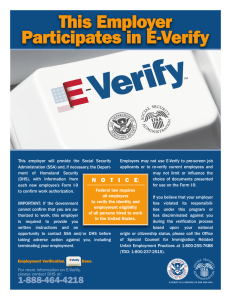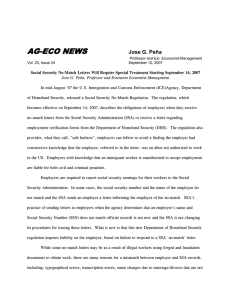HANDLING SOCIAL SECURITY NO-MATCH LETTERS WHAT EMPLOYERS NEED TO KNOW
advertisement
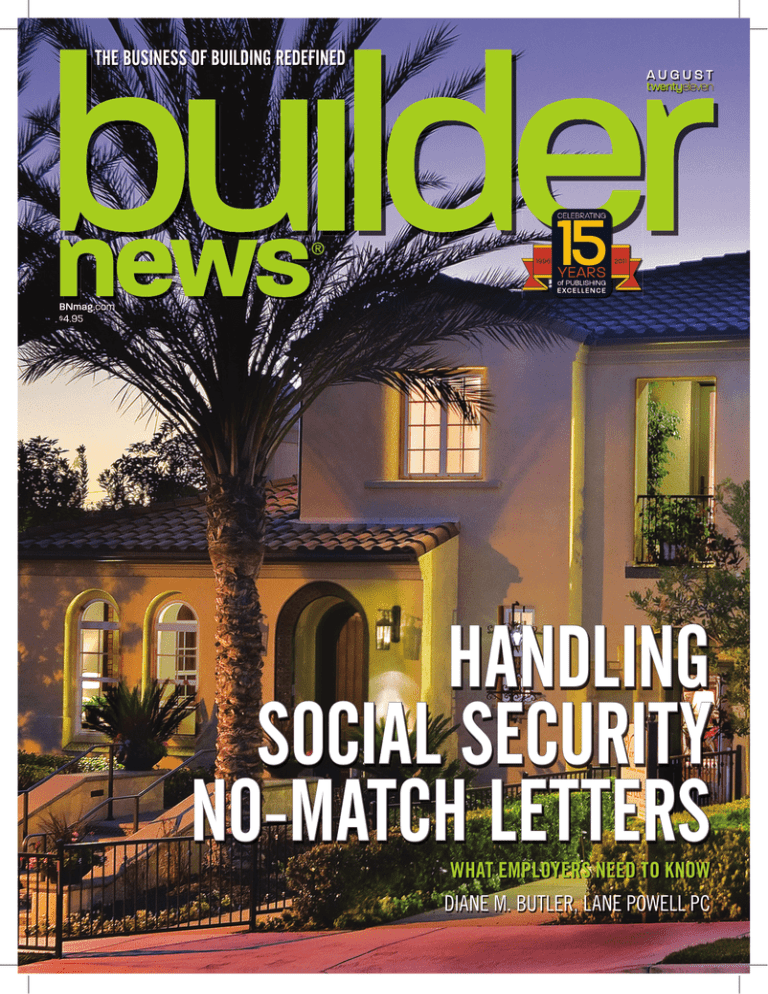
AuGusT HANDLING SOCIAL SECURITY NO-MATCH LETTERS WHAT EMPLOYERS NEED TO KNOW DIANE M. BUTLER, LANE POWELL PC c o lu m ns :: LAW Handling social security No-Match letters what employers need to know diane m. butler Receipt of any letter from the government about being out of compliance can cause alarm for a business. The Social Security Administration (SSA) recently resumed notifying employers of mismatches between an employee’s name and Social Security number (SSN), known as “No-Match” letters. A No-Match letter informs the employer that discrepancies exist between an employee’s name and Social Security number contained in SSA’s database, against those on the employee’s W-2 form. The purpose is to enable the SSA to allocate Social Security funds correctly. SSA had stopped sending No-Match letters in 2007 and 2008 (tax years 2006 and 2007), in response to litigation surrounding a proposed Department of Homeland Security (DHS) regulation, “Safe Harbor Procedures for Employers Who Receive a No-Match Letter.” DHS later rescinded the proposed regulation. SSA recently decided to resume sending No-Match letters in April 2011, for tax year 2010. No-matches are triggered for a variety of reasons for U.S. and foreign workers alike. The receipt of a No-Match letter listing information about an employee does not mean the employee lacks authorization to live or work in the United States. SSA advises employers they should not fire employees based solely on the employee’s SSN information being listed on a NoMatch letter. However, an employer must terminate an employee if it knows the employee lacks authorization to work in the United States. Under case law, unless there are facts that make the employer believe it is “highly probable” that the employee is not legally authorized to work, the employer is not held to have knowledge or even constructive knowledge. Given the possible errors in government databases, and the many possible reasons for a SSN mismatch (truncating of long names, name changes, typographical errors, etc.), 38 :: Buildernews | August 11 ® a no-match discrepancy should not create a presumption of lack of employment authorization. In order to prepare for the the possible recipt of No-Match letters, an employer should implement procedures to deal with no-match discrepancies. Here are some do’s and don’ts: :: Do keep a copy of the documentation the employee presented to show evidence of work authorization when the Form I-9 for Employment Eligibility Verification was completed. :: Do review the employee records of each person whose SSN is listed on the No-Match letter and respond to the SSA with any obvious errors and descrepancies that you have found. :: Don’t worry about checking the records of persons no longer employed by the company. Simply notify the SSA that the person’s employment was terminated. :: Do notify the employee in writing of the discrepancy. :: Do advise the employee to go to the Social Security office within two weeks to attempt to resolve the discrepancy and to report back about actions needed to resolve the issue. :: Do give the employee more time to resolve the discrepancy, if needed. :: Do keep records of efforts to resolve the discrepancy and their status. :: Don’t terminate an employee who is in the process of attempting to resolve the discrepancy. In some circumstances, an employer may need to terminate the employee after receipt of a No-Match letter. If an employer knows an employee lacks work authorization, the employer must terminate the employee or face the risk in a subsequent DHS enforcement action and be penalized for the continuing employment of an unauthorized alien. If an employer knows an employee lacks work authorization, the employer must terminate the employee or face the risk in a subsequent DHS enforcement action... An employer can be found to have constructive knowledge based on the totality of relevant circumstances. Good faith, but ultimately unsuccessful, attempts to comply with the law should be taken into consideration if the employer subsequently is charged with constructive knowledge of hiring unauthorized workers. An employer should not terminate an employee until the process is completed, unless the employer obtains actual knowledge (such as through an admission by the employee), or the employer believes it is highly probable that the employee is not eligible for employment in the United States. Diane M. Butler is a shareholder at the Lane Powell law firm, where she focuses her practice on business immigration and manages the firm’s immigration and Canada practices. She can be reached at butlerd@lanepowell.com or 206.223.7715.

